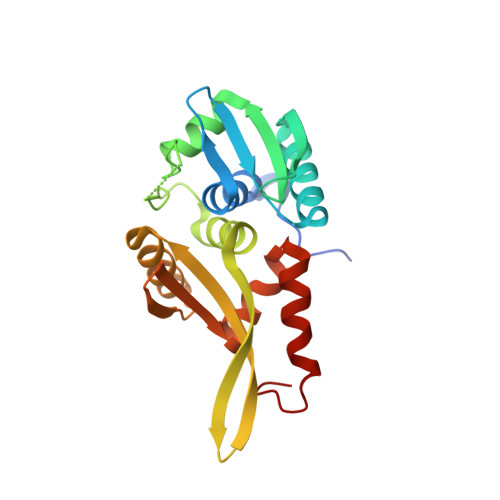Structure of a hyperthermophilic archaeal homing endonuclease, I-Tsp061I: contribution of cross-domain polar networks to thermostability.
Nakayama, H., Shimamura, T., Imagawa, T., Shirai, N., Itoh, T., Sako, Y., Miyano, M., Sakuraba, H., Ohshima, T., Nomura, N., Tsuge, H.(2007) J Mol Biol 365: 362-378
- PubMed: 17069851
- DOI: https://doi.org/10.1016/j.jmb.2006.09.066
- Primary Citation of Related Structures:
2DCH - PubMed Abstract:
A novel LAGLIDADG-type homing endonuclease (HEase), I-Tsp061I, from the hyperthermophilic archaeon Thermoproteus sp. IC-061 16 S rRNA gene (rDNA) intron was characterized with respect to its structure, catalytic properties and thermostability. It was found that I-Tsp061I is a HEase isoschizomer of the previously described I-PogI and exhibits the highest thermostability among the known LAGLIDADG-type HEases. Determination of the crystal structure of I-Tsp061I at 2.1 A resolution using the multiple isomorphous replacement and anomalous scattering method revealed that the overall fold is similar to that of other known LAGLIDADG-type HEases, despite little sequence similarity between I-Tsp061I and those HEases. However, I-Tsp061I contains important cross-domain polar networks, unlike its mesophilic counterparts. Notably, the polar network Tyr6-Asp104-His180-107O-HOH12-104O-Asn177 exists across the two packed alpha-helices containing both the LAGLIDADG catalytic motif and the GxxxG hydrophobic helix bundle motif. Another important structural feature is the salt-bridge network Asp29-Arg31-Glu182 across N and C-terminal domain interface, which appears to contribute to the stability of the domain/domain packing. On the basis of these structural analyses and extensive mutational studies, we conclude that such cross-domain polar networks play key roles in stabilizing the catalytic center and domain packing, and underlie the hyperthermostability of I-Tsp061I.
Organizational Affiliation:
Structural Biophysics Laboratory, RIKEN SPring-8 Center, Harima Institute, Kouto, Sayo, Hyogo 679-5148, Japan.
















